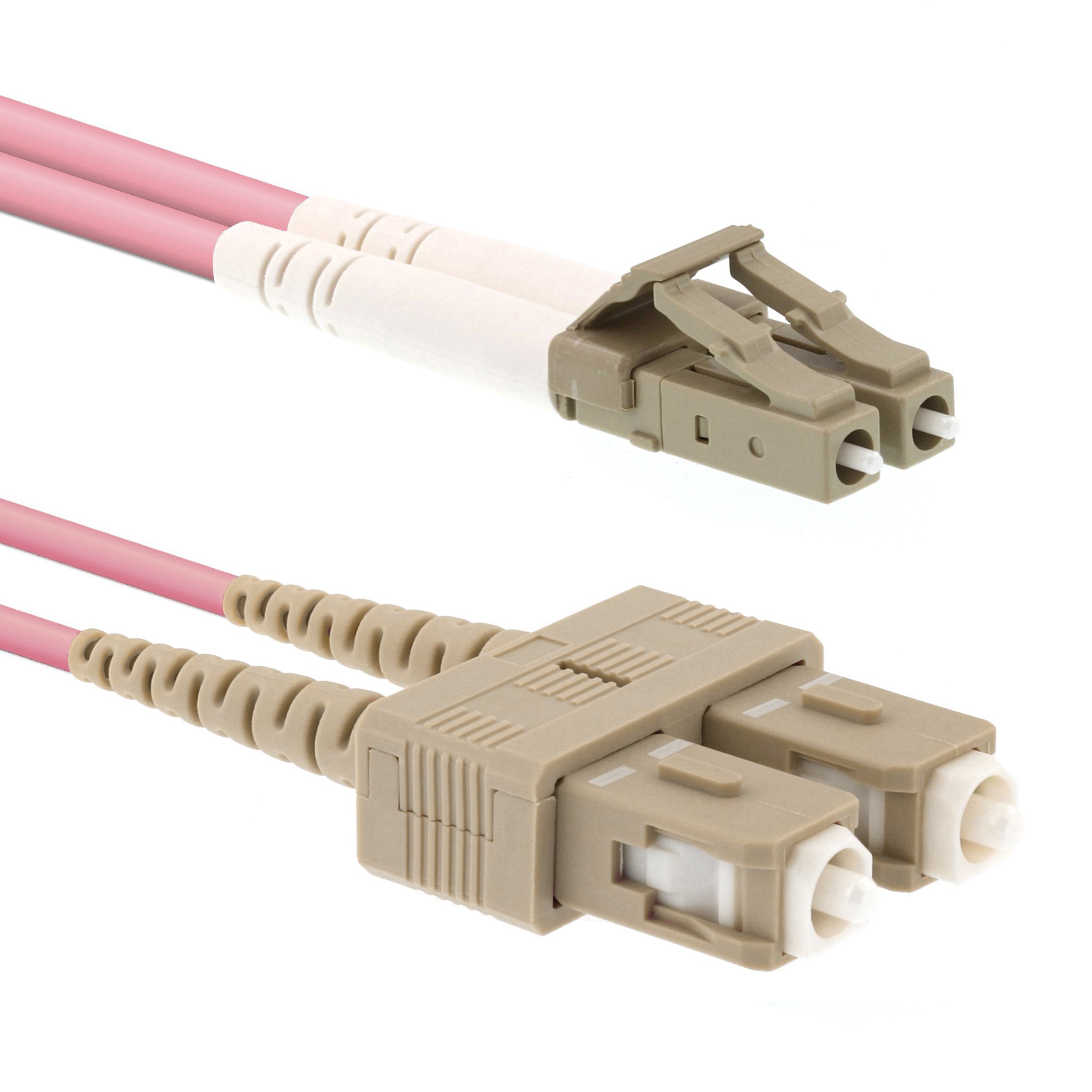
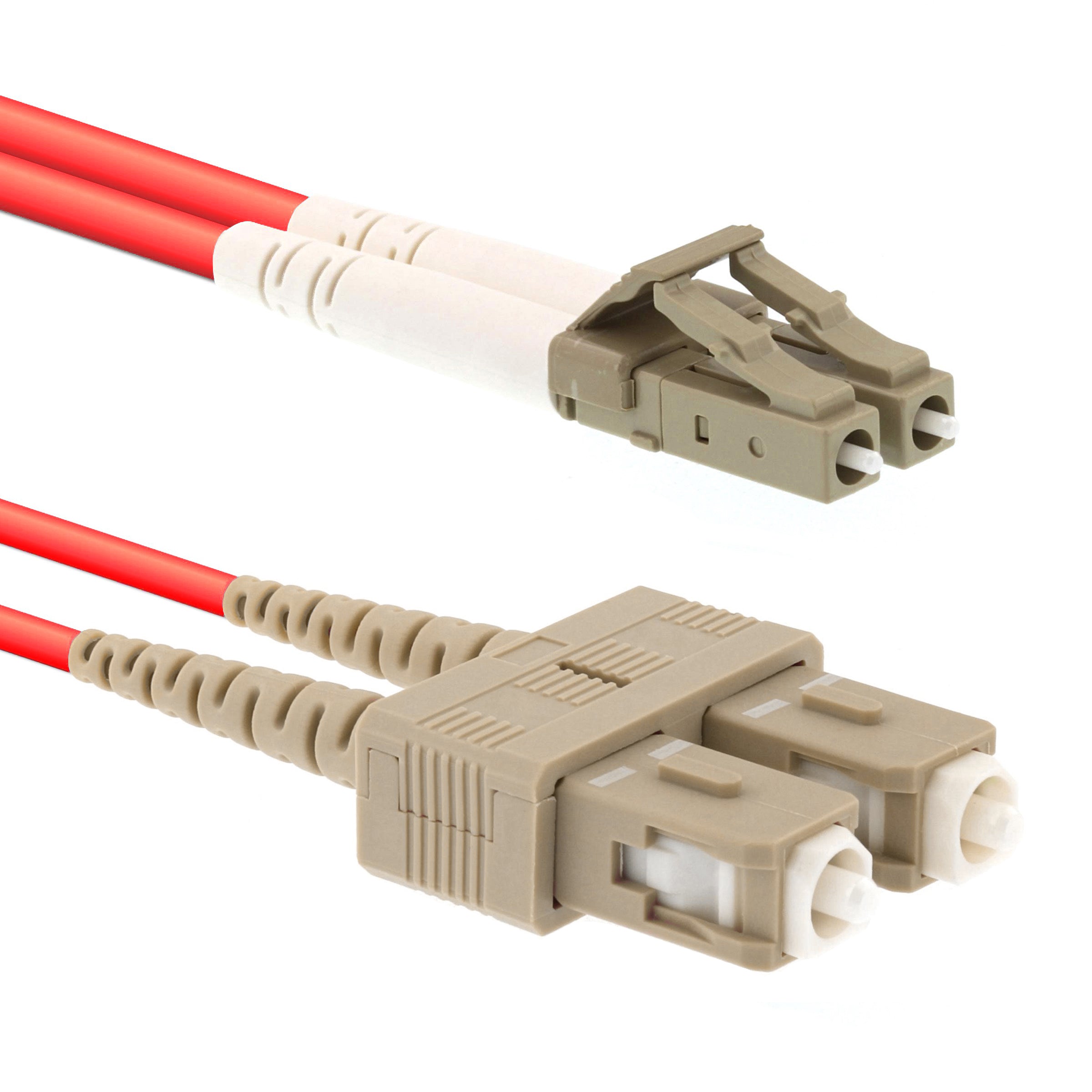
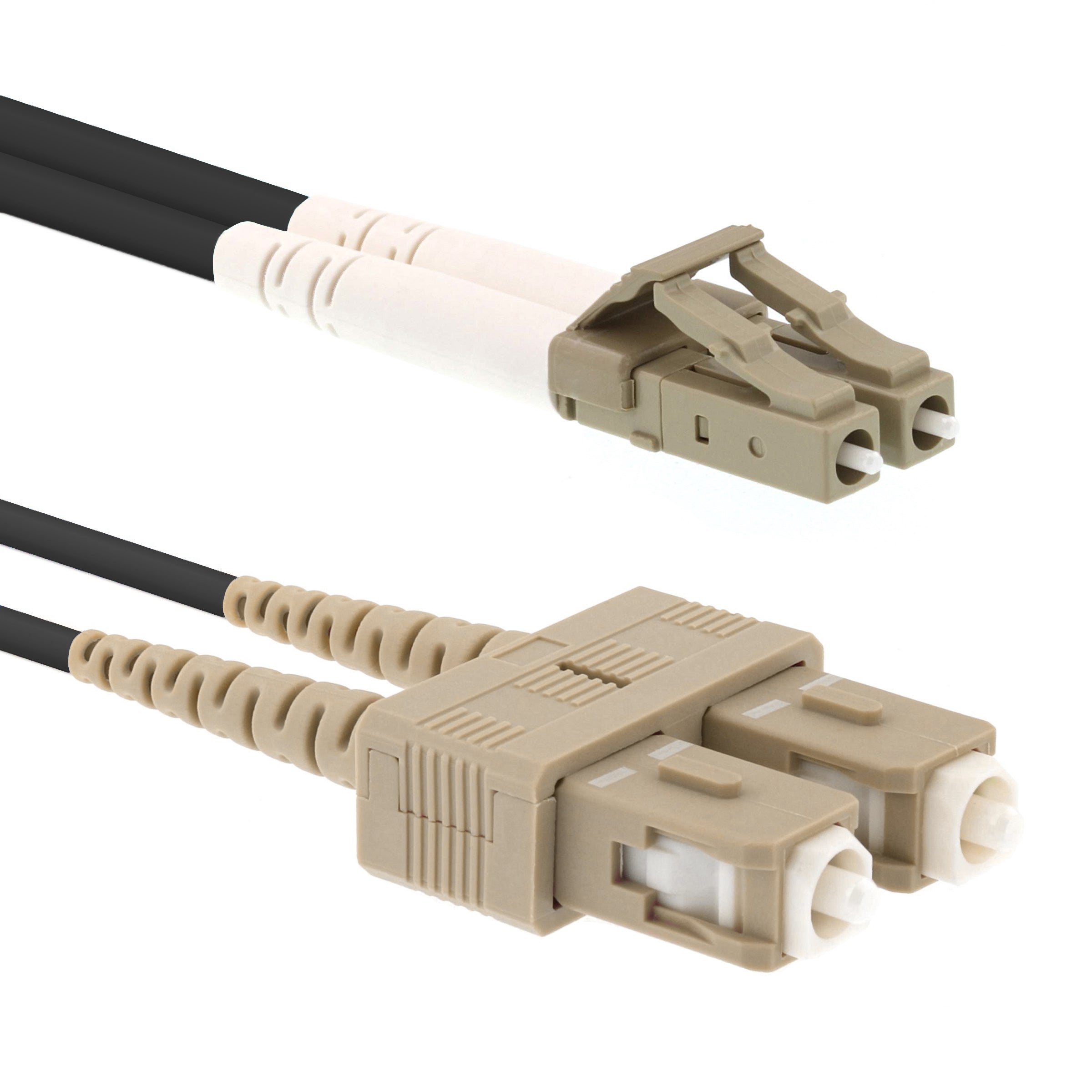
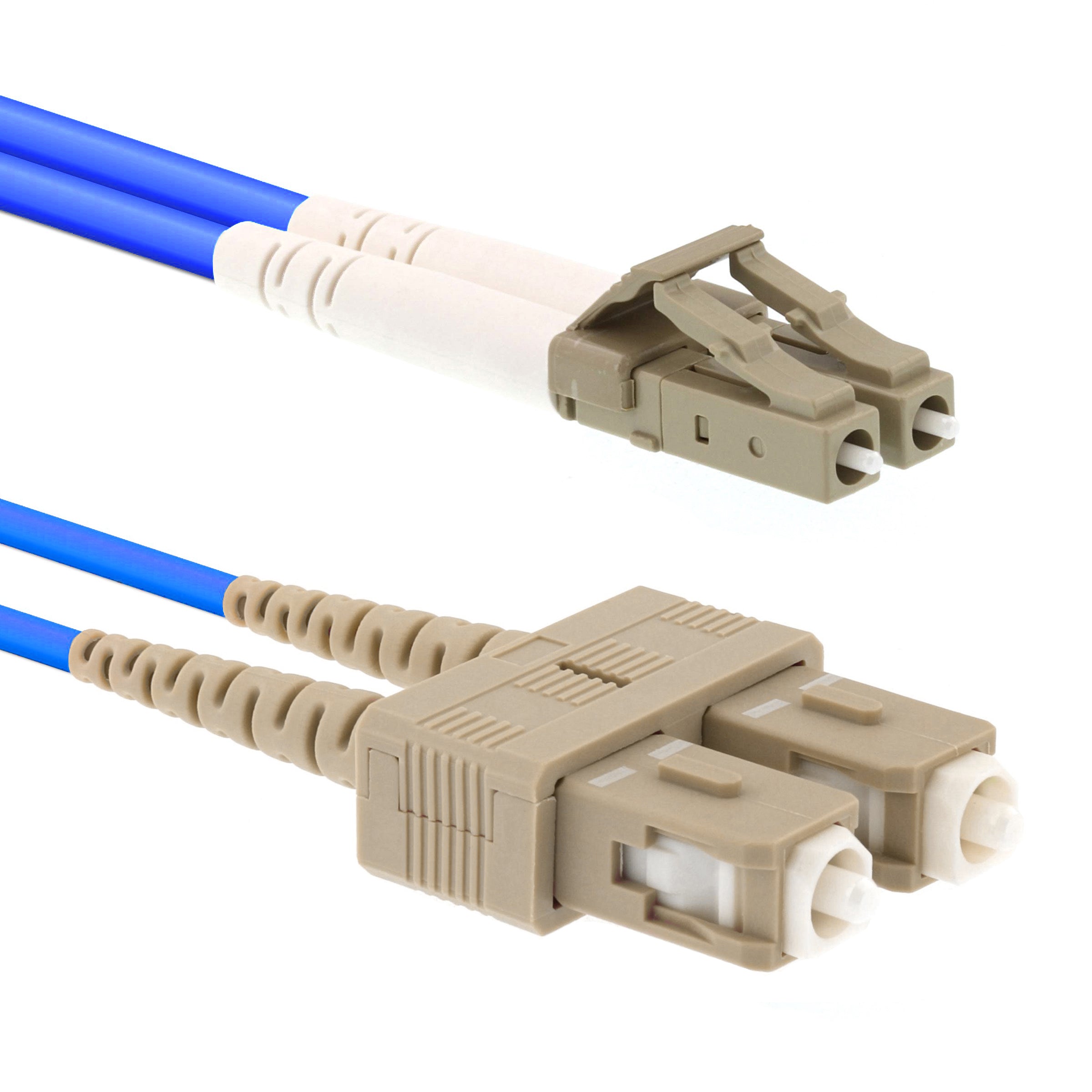
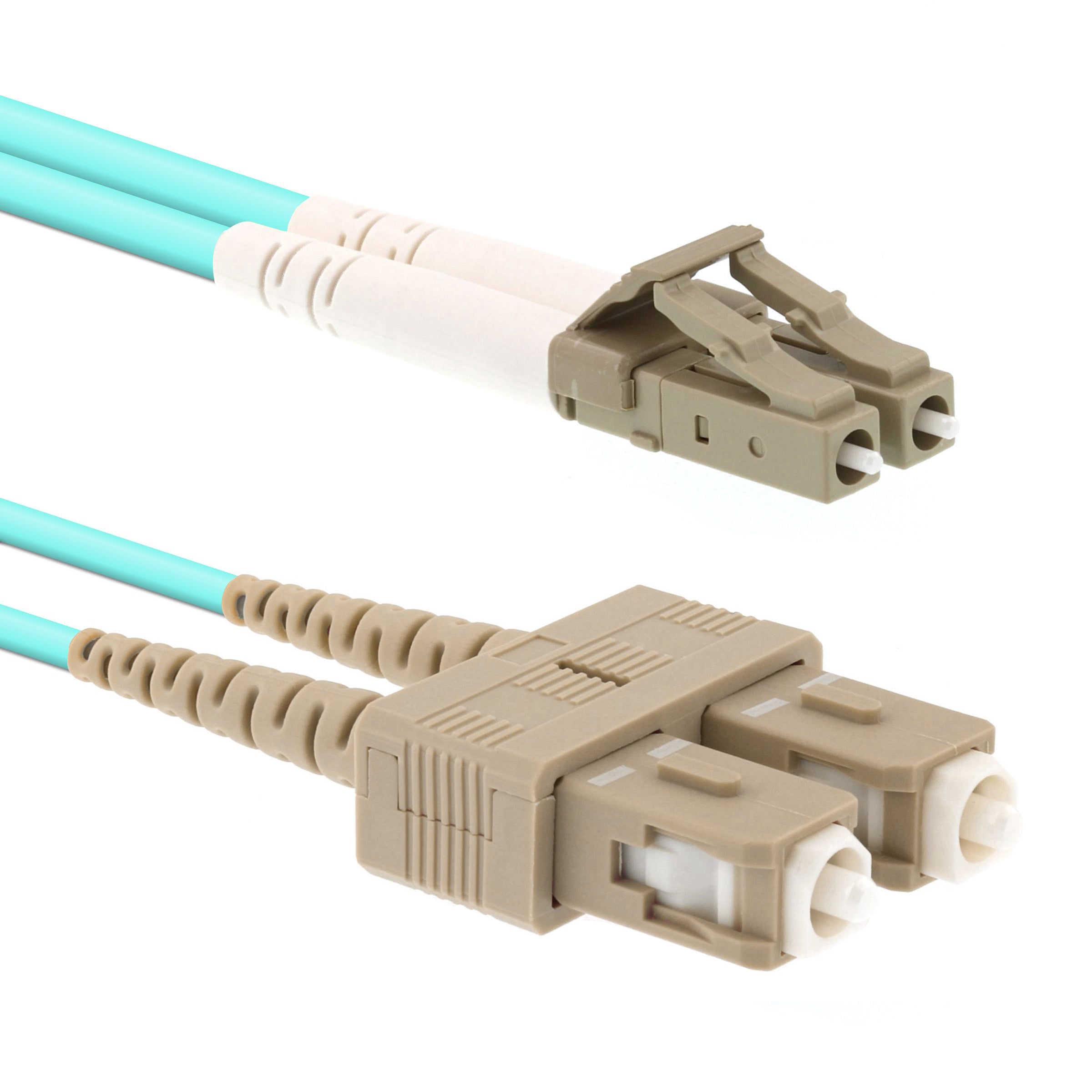
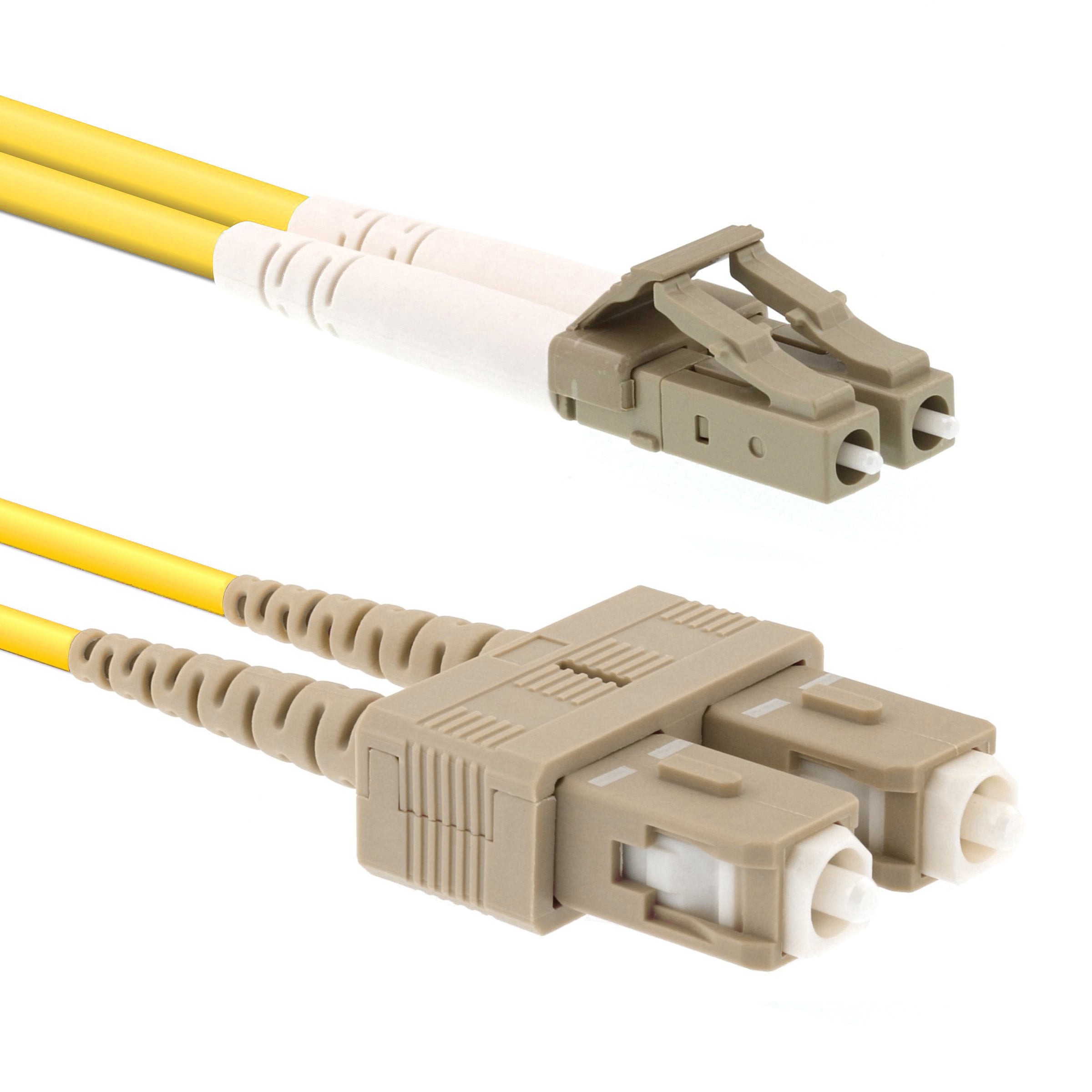
CCD LC-SC Singlemode OS2 Duplex Fibre Optic Patch Cable
GST Inclusive

Core Specifications & Benefits:
- Expanded Capacity: Full-spectrum operation (1260-1625nm) unlocks 50% more usable wavelengths, significantly boosting transmission capacity.
- Future-Proof Performance: Optimized for high-speed technologies like DWDM and CWDM.
- Enhanced Wavelength Availability: Suppresses the 1383nm water peak, enabling E-band operation (1360-1460nm) and providing 100nm of additional usable wavelengths.
- Seamless Integration: Compatible with existing 1310nm equipment.
- Reliable & Robust: Superior protection and consistent strip force stability.
- Precision Engineered: Accurate geometrical parameters minimize splicing loss and maximize efficiency.
- Single-Mode OS2 Fibre: 9µm core, 125µm cladding.
- LSZH Jacket: Low Smoke Zero Halogen.
- Ferrule Housing: Zirconia Ceramic.
Standards Compliance:
- ITU-T G.652D
- IEC 11801-1
- IEC 60793-2-50 type B1.3
- IEC 61304: Low Smoke
- IEC 60754: Halogen & Corrosion Free
- IEC 60332: Flame Retardant
- Telcordia GR-326-CORE
- RCM Compliance (SDoC)
Optical Performance:
-
Attenuation:
- ≤0.34 dB/km at 1310nm & 1383nm (after H2-aging)
- ≤0.20 dB/km at 1550nm
- ≤0.24 dB/km at 1625nm
-
Attenuation vs. Wavelength:
- ≤0.03 dB/km (1285-1330nm)
- ≤0.02 dB/km (1525-1575nm)
-
Chromatic Dispersion Coefficient:
- -3.5 to 3.5 ps/(nm·km) (1285-1340nm)
- ≤18 ps/(nm·km) (1550nm)
- ≤22 ps/(nm·km) (1625nm)
- Zero Dispersion Wavelength: 1300-1324nm
-
Zero Dispersion Slope:
- ≤0.092 ps/(nm²·km)
- Typical 0.086 ps/(nm²·km)
- Low PMD: ≤0.06 ps/√km (Link Design Value)
- Cable Cutoff Wavelength: ≤1260nm
- Mode Field Diameter: 8.7-9.5μm (1310nm), 9.8-10.8μm (1550nm)
- Effective Group Index: 1.466 (1310nm), 1.467 (1550nm)
- Point Discontinuities: ≤0.05 dB (1310nm & 1550nm)
- Insertion Loss: ≤ 0.3 dB
-
Optical Return Loss:
- PC SM: > 45 dB
- UPC SM: > 50 dB
- APC SM: > 60 dB
- Repeatability: ≤ 0.2 dB
- Changeability: ≤ 0.1 dB
Geometrical Characteristics:
- Cladding Diameter: 125.0 ± 0.7 μm
- Cladding Non-Circularity: ≤ 1.0%
- Coating Diameter: 235-250 μm
- Coating-Cladding Concentricity Error: ≤ 12.0 μm
- Coating Non-Circularity: ≤ 6.0%
- Core-Cladding Concentricity Error: ≤ 0.6 μm
Environmental & Mechanical:
- Operating/Storage Temperature: -40°C to 80°C
- Environmental Stability: Attenuation variation ≤0.05 dB/km under temperature, humidity, and immersion conditions.
- Minimum Bend Radius: 35mm
- Proof Test: ≥ 9.0 N, ≥ 1.0%, ≥ 100 kpsi
- Macro-bend Loss: ≤ 0.05 dB
- Coating Strip Force: 1.5 N (typical), 1.3 N (min), 8.9 N (max)
- Dynamic Fatigue Parameter: 20

Frequently Asked Questions
How long does shipping take?
Orders can take 3-14 business days to arrive, depending on stock levels and your location.
What is a Media Converter?
A media converter is a networking device that converts one type of network media, such as copper network cabling, to another, such as fibre optic network cabling. This is often used to extend network distances or connect different network types.
What is the difference between Single-Mode and Multi-Mode?
Single-mode fibre uses a thin core to guide light in a single path, enabling long-distance, high-bandwidth transmissions. Multi-mode fibre, on the other hand, has a thicker core that allows multiple light paths to travel simultaneously. While this can increase bandwidth over shorter distances, it can also lead to signal distortion due to the different light paths arriving at different times. This makes multi-mode fibre more suitable for shorter-distance applications, while single-mode fibre is better suited for longer-distance transmissions.
What is an SFP module?
An SFP module is a small, hot-swappable device that plugs into media converters, network switches, and routers. It provides various connectivity options, such as fibre optic or copper connectors.
Can I mix and match different brands of SFP modules?
While it's generally possible to mix and match SFP modules from different brands, it's recommended to consult the manufacturer's compatibility guidelines to ensure optimal performance and avoid potential issues.
What is the difference between CAT5e, CAT6, and CAT7 cables?
These are different categories of Ethernet cables, with each category offering higher speeds and better performance than the previous one. CAT7 is the latest and fastest category.
How do I choose the right Media Converter for my network?
Consider factors like the distance you need to cover, the data rates required, and the type of media you're converting between. Consulting with a network professional can help you make the best choice.
Fibre Optic vs Copper Cables
Fibre optic cables use light pulses to transmit data, offering higher bandwidth, longer transmission distances, and immunity to electromagnetic interference. Copper cables use electrical signals, are less expensive but have limitations in distance and bandwidth, and are more susceptible to interference.
Can I use a CAT6 cable with a CAT5e port?
While you can use a CAT6 cable with a CAT5e port, the performance will be limited by the older port. The CAT6 cable's higher capacity won't be fully utilized.
What is the difference between duplex and simplex modes?
Duplex mode enables simultaneous data transmission and reception in both directions, while simplex mode allows data transmission in only one direction at a time.
What is PoE (Power over Ethernet)?
PoE technology transmits electrical power along with data signals over Ethernet cables, eliminating the need for separate power outlets and simplifying network installations, especially for devices like IP cameras and VoIP phones.



